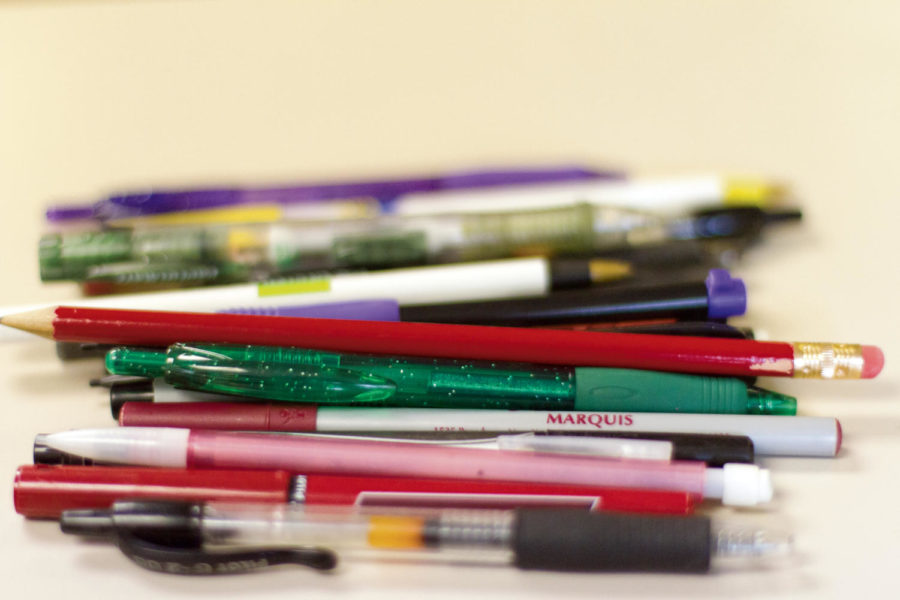Brown: Pen or pencil?
Photo Illustration: Megan Wolff/Iowa State Daily
Opinion: Brown 9/13
September 13, 2012
Ever since humans have been human, we have had to make choices in our lives. We have had to weigh the pros and cons of using different tools to make our lives better. Long ago, these choices could mean life or death, whether the choice was which rock to make into a spearhead or which animal skin to use as clothing.
The same almost holds true for one of the hardest choices a person, especially a student, can make today. It is a choice that weighs such far-ranging characteristics as appearance, physical strength, personal convenience and the lasting impression one may make in the world.
Pen or pencil?
The difference between the two isn’t in their use, for they both write effectively. It is in their details.
A pencil certainly seems more old-fashioned and classic, since the basic design of a yellow pencil and pink eraser have been around for decades. This social construct persists even though pens have been around for centuries more. However, the modern pen, with no attached plumage or continual ink-dipping, resembles its forefathers distantly at best. Pens today come in a variety of colors and styles, ranging from sleek and classy, to gigantic and comical. The pencil, on the other hand, is typically a more reserved writing utensil, although many different and unique forms may be found in its younger cousin, the mechanical pencil.
As the very strong or the very stressed may know, pencils have the unfortunate tendency to snap when extreme pressure is applied. These breaks usually occur only on the head or tip of the pencil but have been reported in some cases as far back as a mere millimeter away from the eraser. Pens break far less often, unless, of course, a writer finally becomes so frustrated with his or her own genius — and the pen’s inability to express it — that he or she snaps the pen in half. Even this is really only possible with the cheap plastic pens one may find. Sturdy metal pens can withstand even the toughest author and are known to be the writing utensil of choice for bodybuilders and professional wrestlers whilst writing their autobiographies.
Convenience usually plays a large part in the choice of pen or pencil. A pencil, for example, needs to be sharpened, except for mechanical pencils, which require the graphite to be manually clicked out. This motion may take “newbies” quite a time to master, as the graphite cannot extend too far, yet cannot be too close to the pencil’s nozzle. A pen is fine for convenience. That is, until one tries to use a pen that will not allow the ink to flow smoothly onto the writing surface. This can easily provoke intense anger and has most certainly been the cause of hundreds of thousands of paper-stabbings and defacings.
The thought of permanency is often a very important one when choosing a writing utensil. Pens usually do not come with the special erasers that will remove their marks, whereas pencils come standard with mark-removing apparatuses. Whether or not a person wants their work to be immortal would really depend on the subject. A love note, for example, may need to be hastily erased if it is about to be seen by unintended eyes. Then again, a final will and testament is sure to be desirous of permanency and the inability to be altered without telltale cross-outs. This, however, is still not the ultimate factor to many in the choice of pen or pencil.
Usually, a person will just choose a pen or pencil based on proximity. Many do not really care which they write with, as long as they need not reach very far to get it. Unfortunately, these people just do not realize the seriousness of writing utensil choice, and how it is done. Anyone who cannot be bothered take the time to figure out a simple question such as “pen or pencil?” really is missing out on the joys and jubilations of using the proper tool. They are both glorious devices with unique purposes and characteristics. It seems a shame that these nuances would be overlooked only because one is more readily available than the other.

















